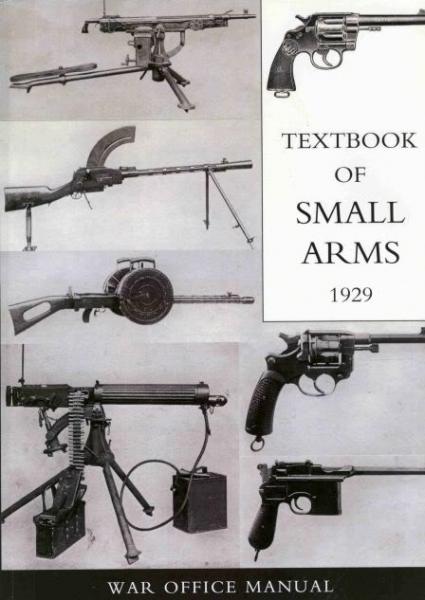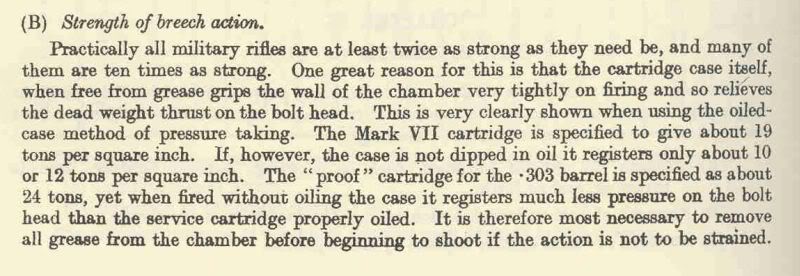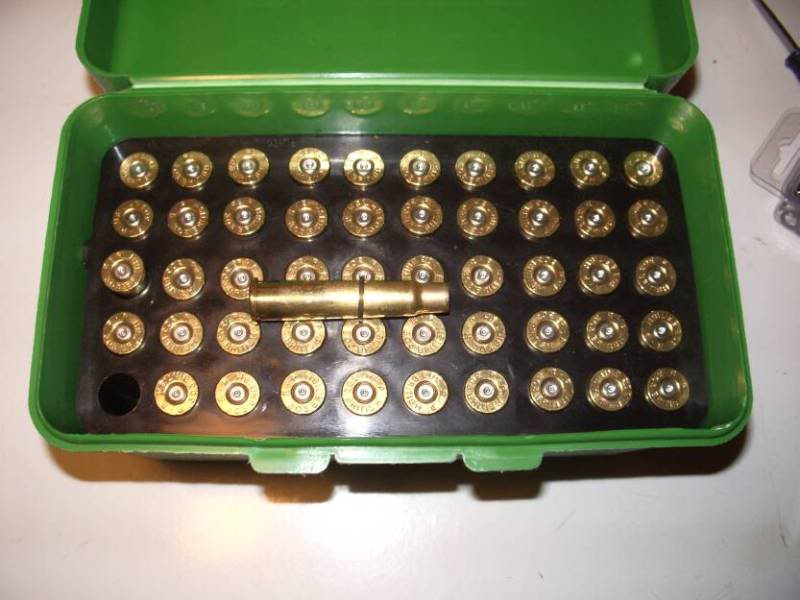Rick
On American made Winchester and Remington cases the shoulder of the case let alone the neck of the case is over a 1/4 inch from where it belongs on the military Enfield rifle.

If you noticed Optimists first case failure was a cracked neck on his destruction test of his .303 cases. Why would I want to stress the necks even more by forming a false shoulder. Why would I want to go to all the trouble of wrapping masking tape around the base of the case when all I have to do is slip a o-ring around the case and be done with it.
Rick if you like your time consuming method of fire forming cases better then by all means use it, If you can prove the o-ring doesn't hold the case against the bolt face then please prove it. If you can prove the o-ring doesn't center the rear of the case in the chamber then please prove it.
What you do NOT understand is WHY I'm pushing the o-ring method of fire forming cases, the reason is simple. We have people telling us that we should grease or lube our cases to fire form them and this creates MORE bolt thrust and excess bolt thrust can damage any rifle.
In 1929 the
British
military told us to not lube our cases and keep the chamber oil free.


In 2008 the
United States
Military told us to NOT lube our cartridge cases.


Rick, we have an American moderator in another forum telling everyone that the British, Canadians and Australians can't make an Enfield rifle with a centered chamber. (Honest to God) The reason he states this is because his cases are warped and banana shaped. The reason these American cases are warped and banana shaped is because the rear of American cases have smaller base diameters than "foreign" made cases, and they are NOT centered in the rear of the chamber when fired.
The second reason these American .303 cases are warped and banana shaped is because they are not made to military standards like the Prvi Partizan cases are. These European CIP cases are over .010 thicker than American made .303 ammunition and I would rate them just as good if not better than American Lake City Match cases.
Below is one of my warped banana shaped "American" cases fired in one of my
Enfield Rifles
. I do NOT blame the British Enfield rifle for this, I blame our American made SAAMI cases that do not fit the military Enfield chamber.

In closing Rick this is a British Enfield forum and I don't feel the need to talk about long dead American gun writers who didn't give a rats A$$ about the Enfield rifle. I like to keep things simple (KISS) and false shoulders and masking tape is not on my agenda. ANYONE can slip an o-ring around a case and fire factory loaded ammunition or to fire form cases. I also don't see the need to over complicate the matter by adding "false shoulders" and masking tape to the issue.
What I have said here Rick is my opinion about the rubber o-ring method of fire forming cases that was posted by a
Canadian
at the old
Jouster
Enfield forum and I see NO reason to change it. To each his own, it works for me



You set your sight for 400 yards with these pistol bullet reduced loads for fire forming your cases.
You pull the trigger and wait....................................
to hear the bullet hit the target at 100 yards


Now WHY would I want to mess with a good thing?


















 PM
PM











